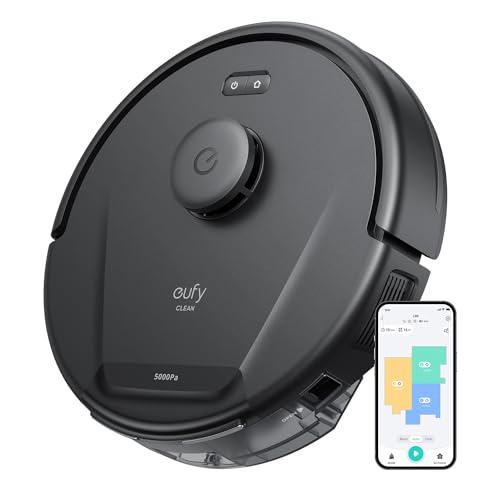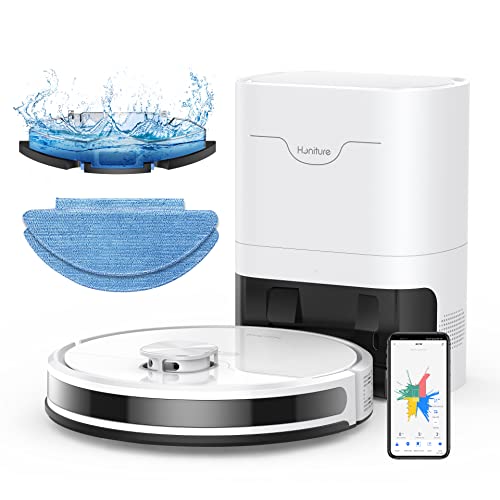Buying a Robot Vacuum With lidar robot navigation and Camera
If you’re in the market for a robot vacuum that has lidar and camera, you have a couple of choices. These robots use SLAM to map your space and Lidar for navigation.
This system of navigation is more effective at staying clear of obstacles, compared to gyroscopic or sensor-based systems that are prone to being blindsided when an accumulation of dog pee, or a random cable that is sucked into the wheels, appear.
Obstacle Detection
Cameras and Lidar enable robots to create more detailed maps and recognize and avoid obstacles with greater accuracy. The camera also lets the robot to view inside cabinets and closets, which can be helpful in navigating difficult corners or getting under furniture.
 A sensor called Lidar (light detection range) sends laser beams all across the room. The time required for laser beams to bounce back from objects and return to the sensor is used to calculate the distance. This information is then integrated into the virtual map of the space, which is called the robot moves. Lidar is an alternative to cameras that provide a visual representation of the surrounding. It doesn’t rely on lighting conditions, and can be useful in dark environments.
A sensor called Lidar (light detection range) sends laser beams all across the room. The time required for laser beams to bounce back from objects and return to the sensor is used to calculate the distance. This information is then integrated into the virtual map of the space, which is called the robot moves. Lidar is an alternative to cameras that provide a visual representation of the surrounding. It doesn’t rely on lighting conditions, and can be useful in dark environments.
Some robot vacuums employ SLAM (simultaneous localization and mapping) to create an 3D map, and then use this map to navigate in a planned method. This is a major advantage over robots without SLAM. They could appear to be ping ponging around a room or having difficulty navigating around furniture.
Other kinds of robot navigation include gyroscopes that use the quick spinning movement of the robot to determine distance and location of obstacles in the room. These systems are less expensive than laser-based systems and can be used to stop the robot bumping into objects. However, they might not be as efficient in creating maps of the area or creating no go zones around wires and dangers.
Certain robots can detect obstacles such as the pile of cables under your desk or the dog’s urine. They can then be programmed to clean the objects, or more important – create clear no-go zones that tell the robot to not attempt to clean up the mess. You can monitor the state of your robot’s mapping and no go zones via the smartphone app, making it easier to keep the track of your cleaning.
Mapping
The mapping technology that is built into robot vacuums — much similar to the technology used in self-driving cars and virtual reality video gamesprovides convenience by allowing them to navigate your home with out the human error that typically is the case with manual mowing and vacuuming. There are many different methods of navigation available, but one that has proven to be particularly effective is Light Detection and Ranging (lidar) mapping.
A camera that is mounted on top of a robot vac captures images of the surroundings. It then uses computer vision algorithms to detect objects like furniture and walls and to construct an image of the living area. This is the main method of navigation for the majority of robots. However, it comes with certain limitations. For instance, it could be slow to map a room and is not very useful in low-light environments.
Lidar mapping is more precise, faster and is effective in dark settings. It is also very efficient in detection of drop zones, like steps or other abrupt changes in elevation. The drop detection feature is included in almost all vacuum robots. It stops the machine from falling on steps or other obstacles.
 Those who want to take mapping to the next level should think about models that employ vSLAM, also known as visual simultaneous localization and mapping. This technology makes use of upward-facing cameras that can see the ceiling, and other major objects in the space. It is more effective in navigation through multi-level homes than other navigation methods.
Those who want to take mapping to the next level should think about models that employ vSLAM, also known as visual simultaneous localization and mapping. This technology makes use of upward-facing cameras that can see the ceiling, and other major objects in the space. It is more effective in navigation through multi-level homes than other navigation methods.
If cost is not an issue A robot that is equipped with this technology is the best robot vacuum with Lidar choice for navigation. It is the most precise and sophisticated choice available, and it will make it less likely that your robot will crash into your walls or furniture legs.
The majority of robots that utilize this type of navigation also include smartphone apps as well as smart home integration, such as compatibility with Alexa and Siri. This allows you to create “no-go zones” to mark areas where vacuum cleaners should not be, like behind the TV or behind a desks with cords. The app also displays the cleanroom map of your entire home, which means you can check if certain areas aren’t being cleaned properly and make adjustments.
Suction
Many robot vacuums come with sensors to help them navigate around the house. Based on the model, these may include 3D structured light obstacle avoidance technology, monocular or binocular vision-based obstacle avoidance or laser navigation. All of these technologies are designed to assist a robotic vacuum avoid obstacles and create a map of the environment.
A robot equipped with a camera can provide information about the surrounding that isn’t available from other sensors. It can be particularly helpful in situations where the robot has to differentiate from similar-looking objects like furniture or walls. A camera can also help the robot to see small obstacles such as wires and cords that may become entangled in the wheels or pulled down by the robot’s powerful suction.
In addition to cameras Some premium robots also come with lidars that can generate a detailed map of the space. These robots make use of maps to avoid obstructions and finish the cleaning process faster than less advanced versions.
Lidar can’t see small obstacles like wires, therefore it is essential to keep the area clear of wires and other clutter when using a robot equipped with this feature. Furthermore, if the sensors is blocked with dust or other debris, it could affect the performance of the robot.
The majority of robot vacuums come with sensors that can detect obstacles. However they aren’t able to detect fine particles like pet hair or fine dust. A robot equipped with a built-in camera can detect these particles more precisely and is a great option for homes with pets or children.
It doesn’t matter if you select an automated robot equipped with a camera or not, they must all have drop detectors to stop them from falling off of stairs or other obstacles. These sensors can save you the expense of replacing a robot damaged due to falling off a surface or falling down the stairs.
In addition to sensors, some top models of robot vacuums are equipped with cameras to aid in navigation and mapping. These cameras can allow you to set up virtual no-go zones to prevent the robot from entering areas that have a lot of wires and cables, which could lead to damage.
Battery Life
Robot vacuum cleaners use the same technology as self-driving vehicles planes, planes, and virtual reality games. The technology of navigation allows these machines to roam through your floors in a completely autonomous manner and avoid “restricted areas” and even return to the base to recharge their batteries. However, this technology isn’t without cost that ranges between $200 and four figures. Set a budget to ensure you get the most value.
The first step is to decide what you need your robot vacuum to do for you. Do you want it to be your primary vacuum or do you want it to perform a combination of tasks (vacuuming and mopping)? Once you have a budget it’s time to look at features and functions.
It is essential that the model you select has the most efficient map system and navigation system. best lidar robot vacuum technology is the most efficient way to map your space.
lidar navigation robot vacuum works by using lasers that are low-powered to detect light reflections and create a 3D map of the room. This is a lot more precise than other mapping technologies used by robovacs, like infrared sensors or cameras that rely on physical contact with objects in order to collect data.
As with any sensor the cleaner your house is the better it’ll work. It can be a mess of shoes, toys charger cords, and loose wires that interfere with navigation. If a robot vac encounters these obstacles, it’ll likely require more time and energy trying to work around them, which can result in a decrease in battery life and subpar cleaning.
Some robot vacuums have gyroscopes that prevent them from hitting objects. They can even make maps that are basic. Advanced systems, like SLAM (Simultaneous Localization Mapping), can be more expensive but are often more efficient.
